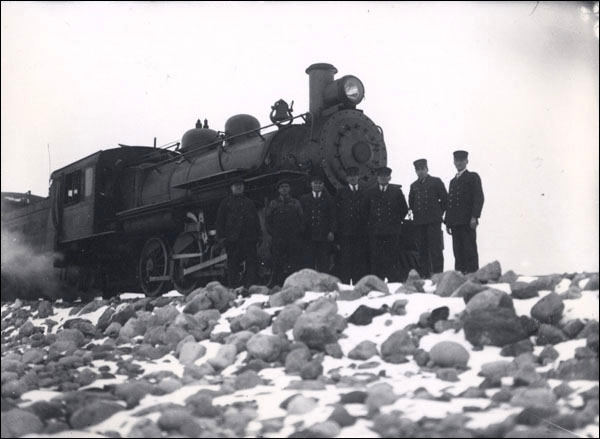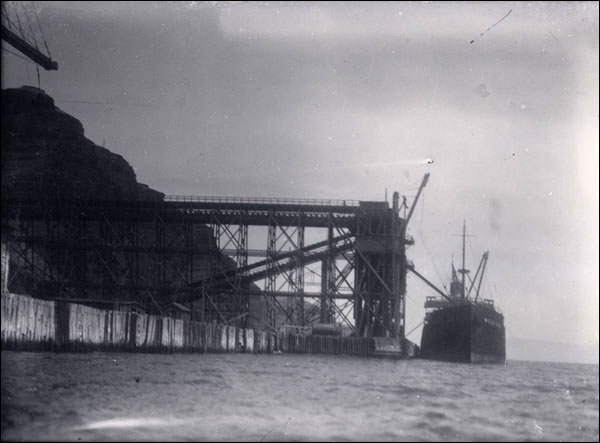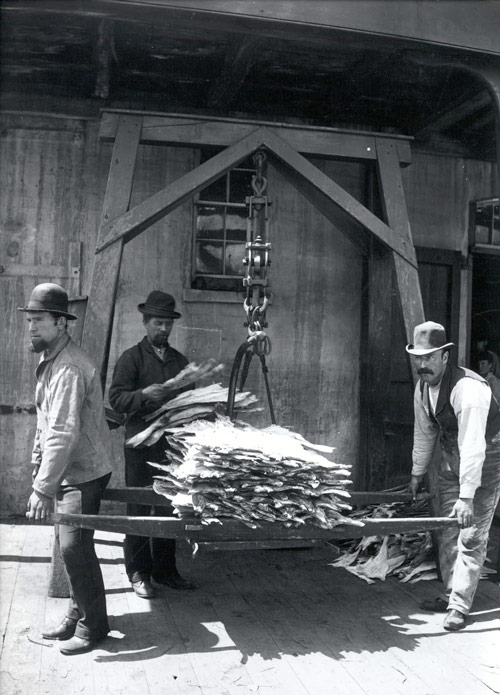Events Leading up to the Great Depression
The Great Depression was a worldwide economic downturn that began in the fall of 1929 and did not end in many places until the Second World War. It was triggered in large part by a sudden crash of the American stock market on October 29, a day widely known as Black Tuesday. In Newfoundland and Labrador, a number of factors contributed to the country's financial troubles. Spending during the First World War had resulted in a large national debt, as did the costs of maintaining the Newfoundland Railway. The government also borrowed heavily throughout the 1920s to meet its expenses and a post-war slump in world trade further exacerbated the situation. The crisis deepened following the Depression, forcing the country to almost default on its public debt payments in 1931 and to ultimately abandon self-government in 1934.
The 1920s
The 1920s were a time of great economic hardship and political instability for Newfoundland and Labrador. The First World War increased the country's debt by $35 million, which severely handicapped all inter-war governments. Most of this cost came from the government's decision to raise, equip, and train its own overseas regiment. Political controversy also marked the later years of the war, as rival parties debated whether or not to introduce conscription. The governing party dissolved in 1919, creating an atmosphere of political upheaval which lasted for the next 15 years. Scandal became commonplace at the House of Assembly, making it difficult for successive administrations to cope with the financial difficulties of the 1920s and 1930s.
The Newfoundland Railway also added to the country's mounting national debt. In 1920, the Reid Newfoundland Company realized that it could no longer afford to operate its costly railway and approached the government for help. That year alone, the railway had accumulated a deficit of $1.7 million. The government passed the Railway Settlement Act in 1923 and assumed control of the operation. The service, however, continued to lose money throughout the 1920s and 1930s, with annual deficits amounting to as much as $3 million. By the time the Great Depression broke out in 1929, government spending on the railway and First World War accounted for approximately two thirds of Newfoundland and Labrador's $80-million national debt.

Despite operating on a constant budget deficit, the Newfoundland and Labrador government borrowed heavily from foreign investors throughout the 1920s. Some of this money was used to help diversify the country's economy into areas other than the fishery. Money from the United Kingdom, for example, helped build a large newsprint mill at Corner Brook, while American and British investors helped fund a new lead and zinc mine at Buchans. These developments, however, required the government to improve existing roads or build new ones, and to install various public utilities at Corner Brook and Buchans. The government could only afford these costly endeavours by borrowing more money and sinking into deeper debt.
At the start of the 1920s, Newfoundland and Labrador reported an already sizeable debt of $43 million; by 1929, that number had almost doubled. Mounting interest payments ate up large portions of the country's income and cut into the government's ability to afford even essential public services without further borrowing. In the 1927-28 fiscal year, for example, the country's interest payments absorbed more than 40 per cent of its income. With little money left over to spend in other areas, the government was ill-equipped to respond to any future financial crises, such as the Great Depression.
International Trade
Compounding the situation was a global economic recession that followed the First World War. The ensuing breakdown in world trade significantly damaged Newfoundland and Labrador's export-based economy. Particularly detrimental was a slump in the international market for dried cod, which accounted for much of the country's income. Making matters worse, some foreign countries were harvesting more cod than they did before the war, which also cut into Newfoundland and Labrador's shrinking market. Iceland, for example, was catching nearly three times its pre-war quotas. Technological advances in refrigeration and the canning industry further decreased the world's demand for dried fish.
There were some bright spots in Newfoundland and Labrador's economy. The Bell Island mine was exporting large quantities of iron ore to Germany throughout the 1920s, and a new lead and zinc mine at Buchans came into production in 1928. Paper exports were also doing well, with mills in Corner Brook and Grand Falls. In the 1926-27 fiscal year, the island's export revenue had almost returned to pre-war levels, due in large part to gains in the forestry and mining sectors. Furthermore, the Judicial Committee of the Privy Council settled the Labrador Boundary Dispute in 1927 by granting Newfoundland sovereignty over the northern territory, where untapped natural resources promised future wealth.

In the short-term, however, increased revenues from mineral and forestry exports, and the possibility of future development in Labrador, were insufficient to meet Newfoundland and Labrador's mounting debt problems. Newfoundland and Labrador's economy remained dangerously fragile in the post-war years because it revolved around the export of fish, minerals, and other natural resources to foreign buyers. If the demand for these goods disappeared, or if prices tumbled, the country's economy would also suffer. Furthermore, Newfoundland and Labrador's large national debt and accompanying interest payments made any drop in profits particularly damaging.
The Great Depression
Following the stock market crash in 1929, the international market for much of Newfoundland and Labrador's goods decreased dramatically. In 1930, the country earned $40 million from its exports; that number dropped to $23.3 million in 1933. The fishery suffered particularly heavy losses as dried cod that sold for $8.90 a quintal in 1929 fetched only half that amount by 1932.

Unemployment also became widespread as low profits forced many companies to lay off workers. The government, however, had little money to spend on social services or other programs which could help the public withstand the depression. Newfoundland and Labrador also found it increasingly difficult to obtain loans during the 1930s and could no longer afford to meet its interest payments without British intervention. By 1933, the country owed close to $100 million and faced bankruptcy. Britain, meanwhile, feared that if one of its colonies defaulted on a loan it could negatively impact the Commonwealth; it agreed to support Newfoundland and Labrador, but wanted greater political control over the country to protect its investment. On 16 February 1934 Newfoundland and Labrador ceased to be a self-governing nation and the Commission of Government was sworn in; it remained in power until Confederation.




